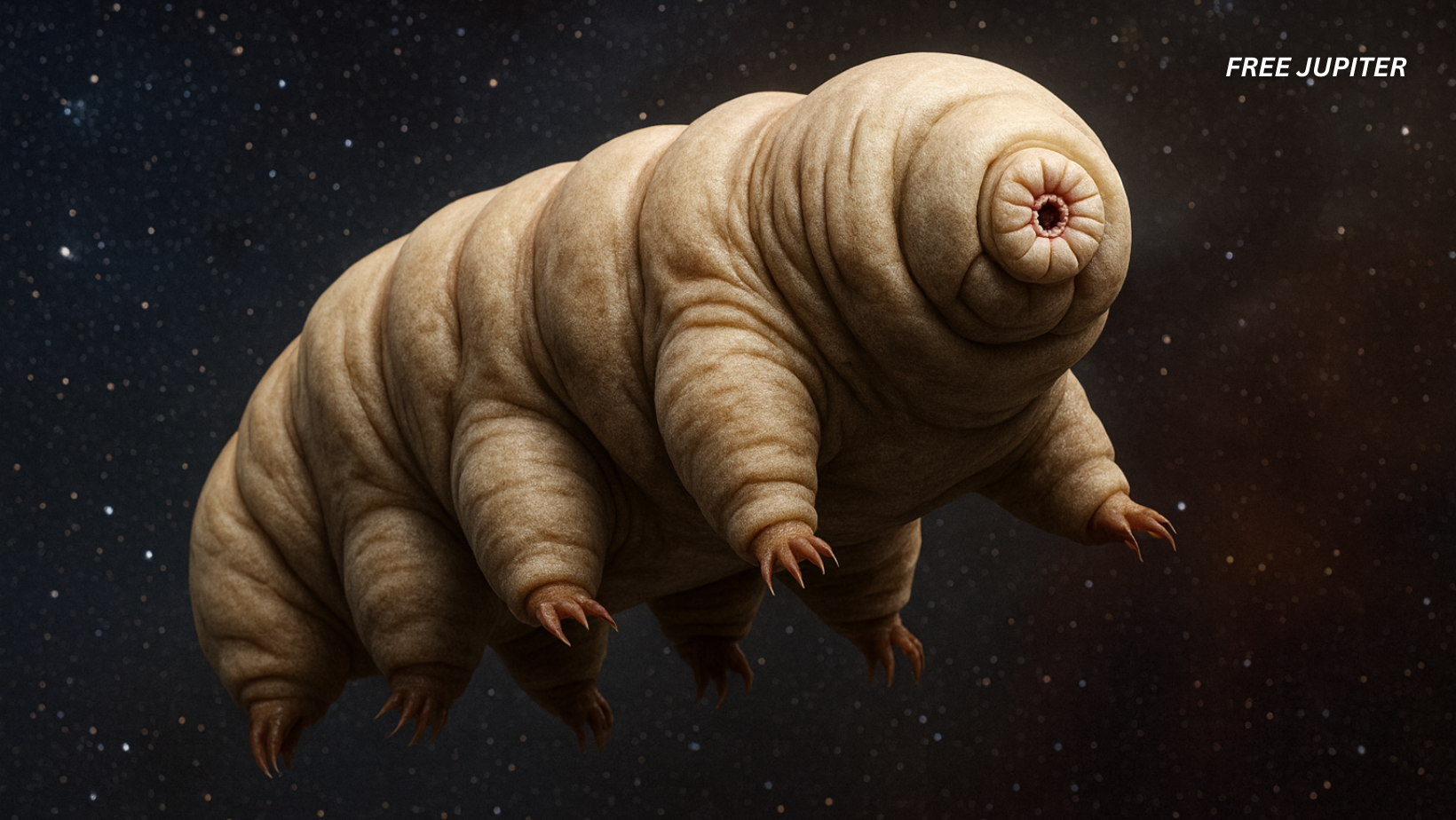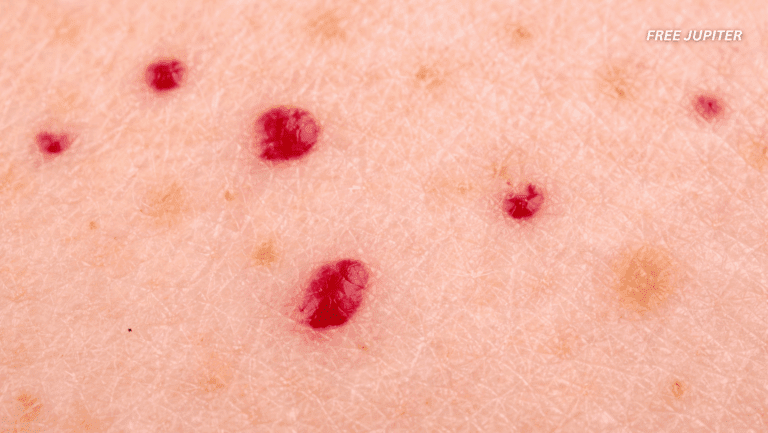Radiation is one of those invisible forces that sounds straight out of a science fiction novel—sometimes lifesaving, sometimes terrifying. In the right hands, it’s used to zap away cancer cells. In the wrong situation, it can destroy living tissue, cause lasting health problems, or even lead to death. And if humanity ever wants to spend months or years traveling through deep space, radiation is one of the biggest threats standing in the way.
But scientists may have found a strange—and surprisingly adorable—ally in the fight against radiation damage: the tardigrade, a microscopic creature better known by its nickname, the “water bear.”
Meet the Tardigrade: Nature’s Survival Champion
Tardigrades don’t look like much at first glance. They’re smaller than a grain of sand, slow-moving, and shaped like little gummy bears with too many legs. But don’t let their squishy appearance fool you—these are some of the toughest animals on Earth.
They can survive being frozen solid, dehydrated for years, blasted with extreme heat, and yes—even being sent into outer space. In one experiment, scientists exposed tardigrades to the vacuum of space, complete with cosmic radiation and zero oxygen. When they brought them back to Earth and rehydrated them, the tiny creatures simply dusted themselves off (metaphorically) and carried on with life as if nothing had happened.
Their secret weapon? Special proteins that shield their DNA and cellular machinery from damage. While humans fall apart under high doses of radiation, tardigrades shrug it off like it’s just another day at the office.
Read more: Human Stem Cells Grow More Active in Space, And It Isn’t a Good Thing, Scientists Warn
Borrowing Nature’s Tricks
This is where researchers at Harvard Medical School and MIT come in. Led by Dr. Ameya Kirtane, the team wondered: What if we could borrow these tardigrade proteins and put them to work in human cells?
Their approach involves messenger RNA, or mRNA—the same type of technology that became a household word during the COVID-19 pandemic thanks to mRNA vaccines. Instead of permanently altering DNA (which can be risky), mRNA acts more like a temporary instruction manual, telling cells to produce a specific protein for a short time.
The researchers designed mRNA to carry the recipe for one of tardigrades’ protective proteins. When injected into mice, the cells followed those instructions and temporarily produced the protein. The results were impressive: the mice’s DNA showed far less damage after being exposed to radiation compared to untreated animals.
In other words, the tardigrade protein acted like a microscopic shield, buying their cells extra protection.
Why This Matters for Cancer Treatment
One of the most common medical uses of radiation is in cancer therapy. Oncologists often describe radiation treatment as a balancing act: it’s like poisoning both the tumor and the patient, then hoping the tumor gives out first.
The problem is that while radiation is excellent at destroying cancer cells, it doesn’t exactly discriminate. Healthy tissues near the tumor often suffer collateral damage, leading to painful side effects and long-term risks.
Dr. Giovanni Traverso, an MIT professor involved in the project, summed it up neatly:
“Radiation can be very helpful for many tumors, but we also recognize that the side effects can be limiting. There’s an unmet need with respect to helping patients mitigate the risk of damaging adjacent tissue.”
If doctors had a way to temporarily protect healthy tissue with tardigrade proteins, they could turn up the intensity of radiation aimed at the tumor itself. That might mean fewer treatment sessions, less overall damage to the body, and—most importantly—better odds of eradicating the cancer.
Beyond Earth: Protecting Future Space Travelers
While cancer treatment is the most immediate application, the researchers are also thinking much further ahead—literally.
Earth has a natural shield against cosmic radiation: its magnetic field and thick atmosphere. But astronauts who travel beyond this protective bubble—for example, on missions to the Moon or Mars—would be exposed to dangerous levels of space radiation for weeks or months at a time. Over long stretches, this can increase the risk of cancer, damage organs, and even impair brain function.
Giving astronauts a dose of mRNA-coded tardigrade protein before a long journey could, in theory, help shield their cells from this constant bombardment. It wouldn’t make space travel completely safe, but it might reduce one of the biggest biological risks.
Read more: Broccoli Isn’t Actually Natural—It Was Engineered by Humans Over Many Centuries
The Broader Field of Borrowed Biology
This idea of borrowing resilience from other species isn’t unique to tardigrades. Scientists have been looking to nature’s toughest organisms for decades:
- Cockroach milk: Researchers once discovered that certain cockroaches produce a nutrient-packed “milk” crystal that’s three times more nutritious than cow’s milk. It has been studied as a potential superfood.
- Deep-sea microbes: Organisms that live near hydrothermal vents survive in crushing pressure and toxic chemicals. Some of their enzymes are already used in industrial applications.
- Frog skin: Compounds found on the skin of certain frogs have shown potential as natural antibiotics, inspiring new drug research.
Tardigrades, however, stand out because their unique proteins seem to offer something that directly plugs into one of humanity’s most urgent medical and space-exploration problems.
Safety First
Of course, borrowing tricks from tardigrades isn’t as simple as copying and pasting. One of the reasons the mRNA method looks promising is because it’s temporary. Unlike altering DNA, which can introduce permanent changes (and potential risks), mRNA only lingers in the body for a short time. Once the protein has been made, the instructions degrade and vanish.
This makes it safer for use in humans, since there’s less chance of unintended side effects. Still, it will take years of testing to know if the approach is safe and effective beyond laboratory mice. Clinical trials would be the next big step, and those require both time and funding.
The Quirky Legacy of the Water Bear
It’s almost poetic that such a bizarre little creature could one day help save human lives or make interplanetary travel safer. Tardigrades, often ignored in biology textbooks, are finally having their moment in the spotlight.
From an evolutionary standpoint, their resilience is the result of millions of years of adaptation to extreme environments. For us, it’s a reminder that solutions to our most high-tech challenges might sometimes come from the most unlikely places—like a microscopic bear-shaped creature quietly lumbering around in moss and pond water.
Read more: Chernobyl’s Radioactive Zone Is Creating a New Kind of Dog
Final Thoughts
Radiation has always been a double-edged sword: powerful enough to heal, yet dangerous enough to harm. Thanks to a little help from tardigrades and clever biotechnology, scientists may have found a way to tip the balance in our favor.
If successful, this line of research could reshape cancer therapy, improve outcomes for patients, and open the door to safer human exploration of space. For now, the “water bear protein shield” is still in the experimental stage, but it’s a glimpse of how blending biology and technology might help us withstand environments that once seemed impossible to survive.
And perhaps that’s the biggest lesson: the next great leap for humanity might not come from machines, but from the tiniest creatures already thriving in places we’d never dare to go.
Featured image: GPT-5o Recreation
Friendly Note: FreeJupiter.com shares general information for curious minds. Please fact-check all claims and double-check health info with a qualified professional. 🌱










